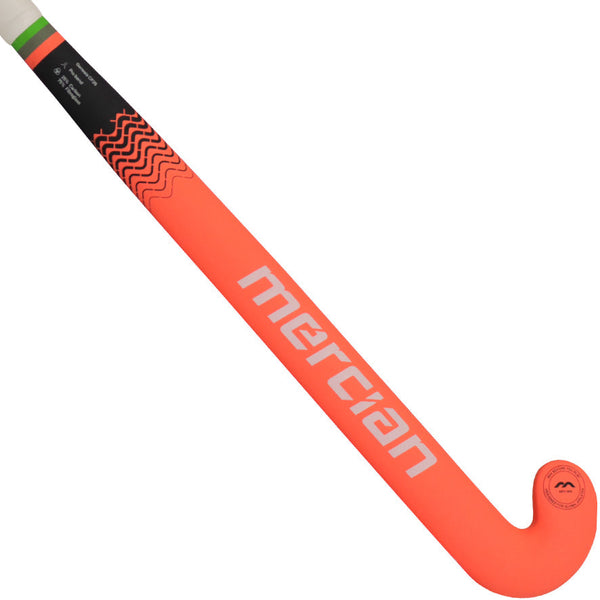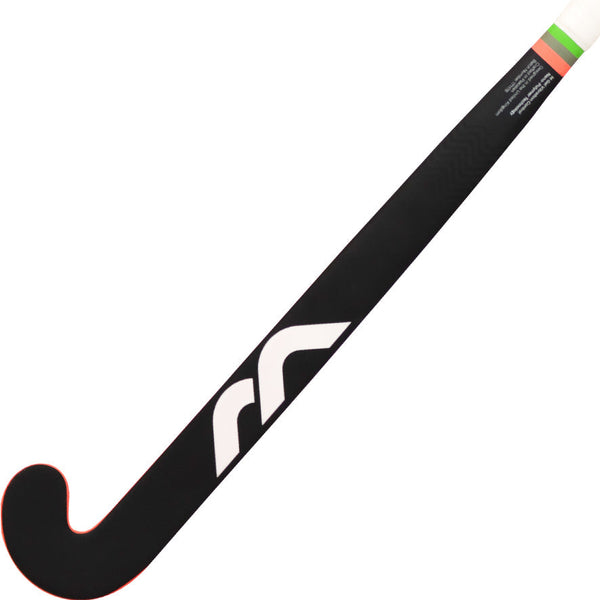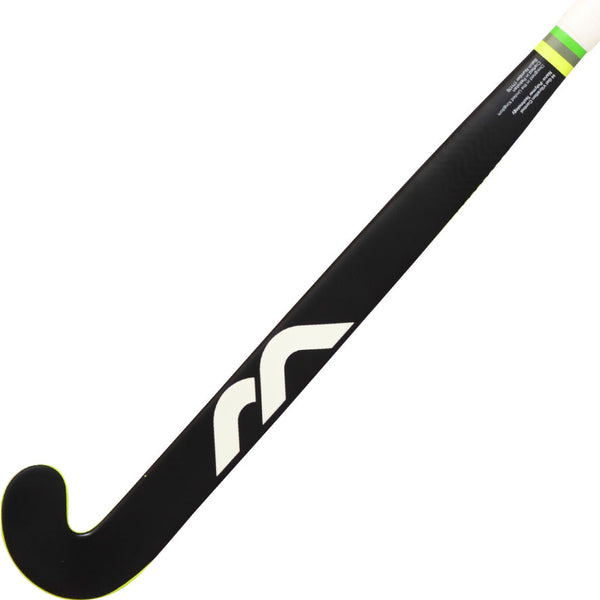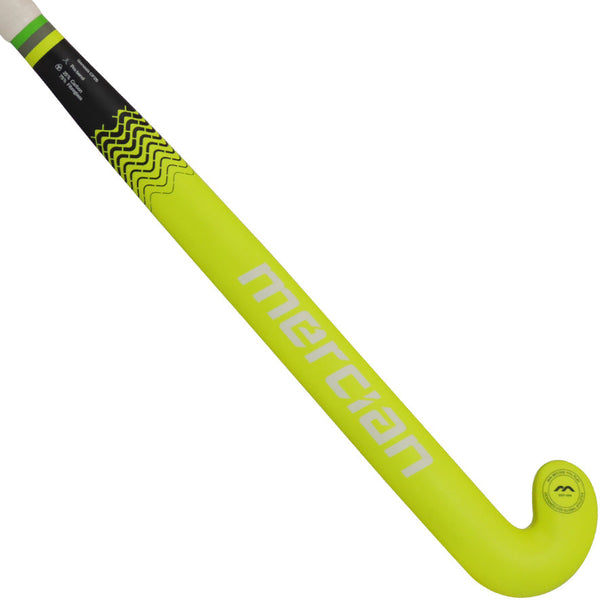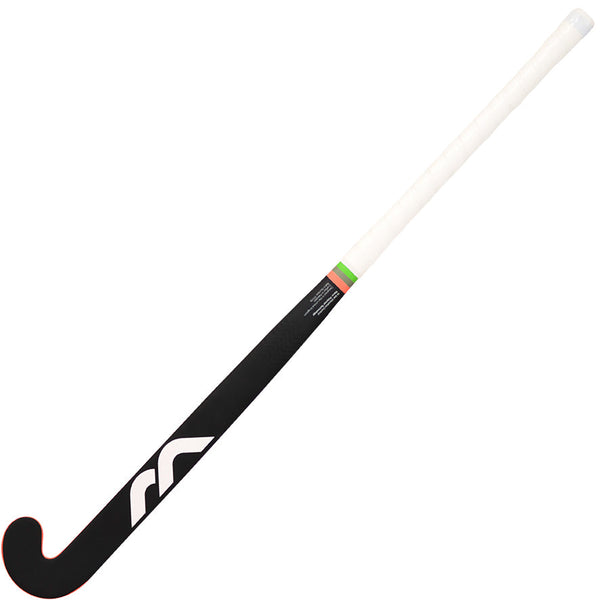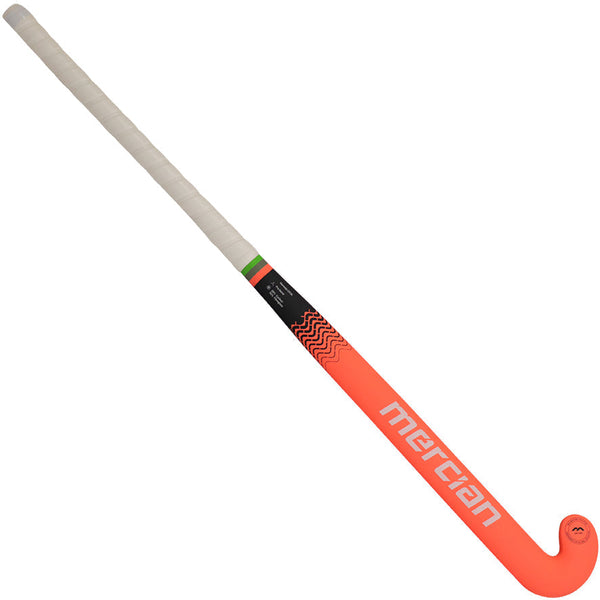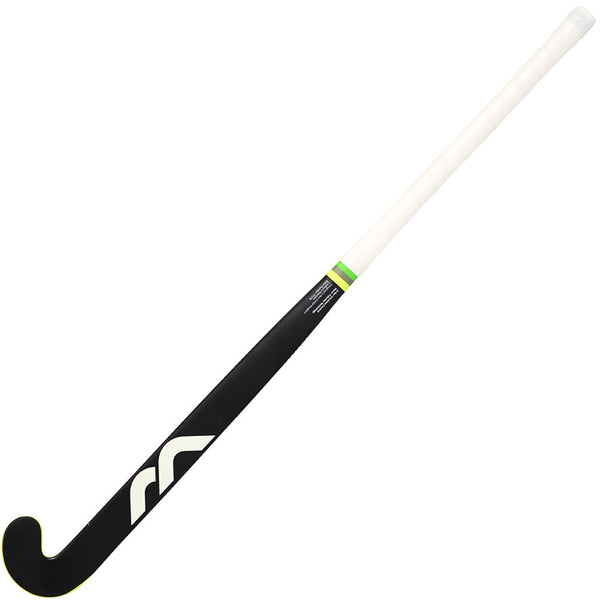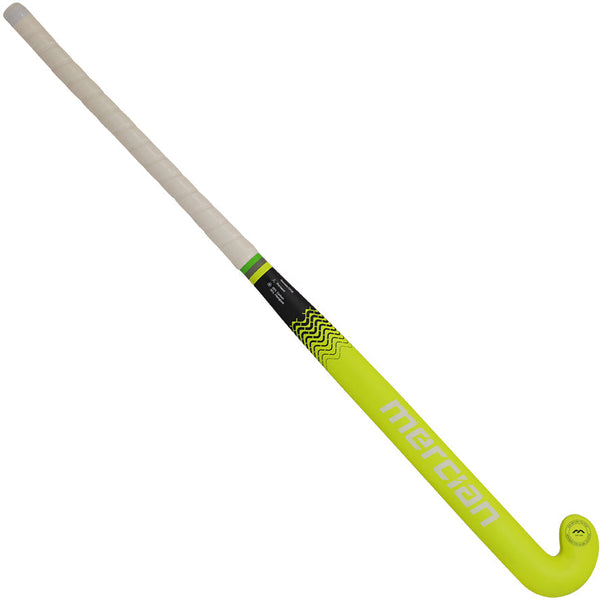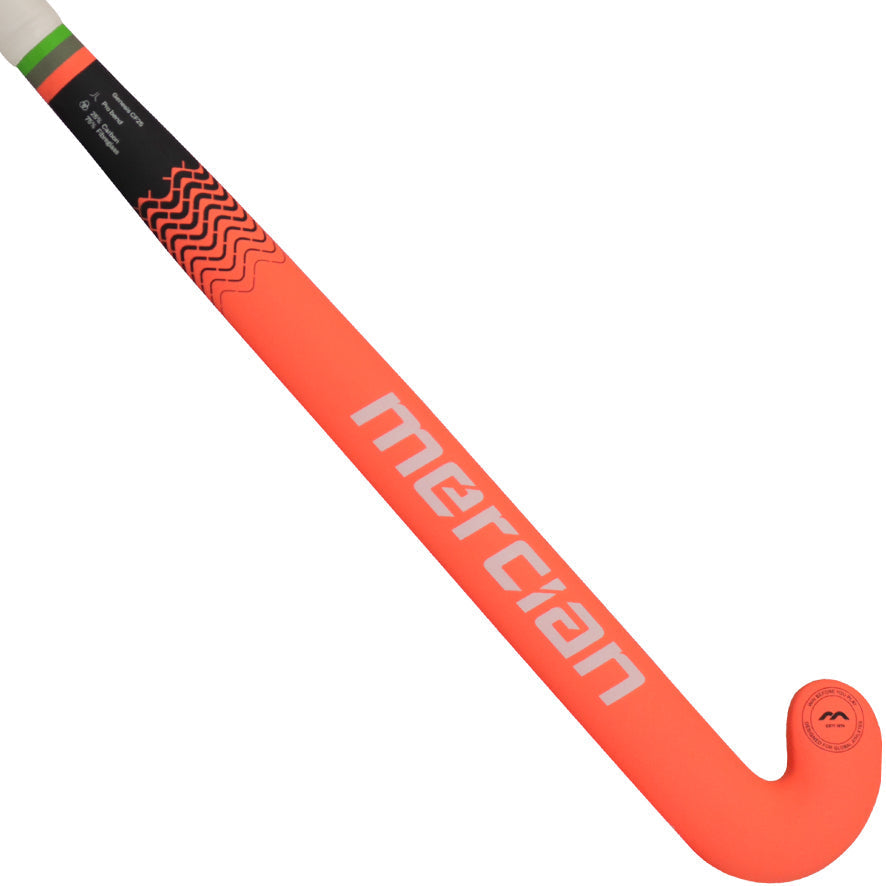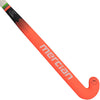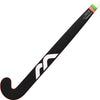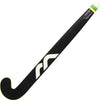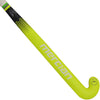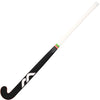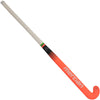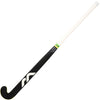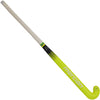Mercian Genesis CF25
- Description
- Technical Details
- Player Profile
The Genesis CKF25 is an intermediate carbon composite stick, designed for junior players who want to deliver more power with their hit and slap skills. The 25% carbon delivers the required stiffness with the fibreglass and Kevlar mix giving touch, feel and durability. The light weight and higher balance point make skill execution for juniors easier, but the full size head helps hitting and slapping power.
- 25% Carbon
- Pro (low) bend (24mm @ 230mm) for senior lengths, 22mm standard bend for junior lengths
- M-Gel vibration control
- Kevlar (Aramid) durability
- Fibreglass Micro-skeleton and laminates
FIBREGLASS
The fibreglass described within any stick is exactly that, very fine (thin) glass fibres / filaments. Multiple filaments are combined to create a thicker fibre. This is then unwound from a spool (like a big cotton reel), dipped in a resin to make them super sticky and then laid out on a release paper (like grease-proof backing paper) to create single directional sheets of fibreglass. These sheets are then cut into smaller pieces and layered at different angles to create strength in multiple directions. Whilst fibreglass is strong, it is not as brittle as carbon and therefore forms a fantastic base (micro-skeleton) which absorbs some energy because of its flexibility and over which the Carbon, Kevlar and Basalt can be layered to create high end performance sticks. In our (Mercian) opinion, sticks perform better with a non-carbon base skeleton.
CARBON FIBRE
One of the most common questions asked by the consumer is ‘how much carbon?’ with the perception that more is better. That is far from the truth, so to shed a little light. Firstly the quality of carbon (manufacturing point) is important. Toray (Japanese) Carbon is often considered the best, but Carbon from Germany, Scotland and South Africa (to name a few) are all high-quality. Sticks are usually made in Pakistan and most major brands will import Carbon into Pakistan to make sticks. Local made carbon is not usually as good. But it is difficult to know if a brand uses imported carbon. The number of filaments in the carbon fibre is relevant, 1K, 3K etc relate to the number of filaments of pure carbon within a fibre or ‘tow’. 1K is used in aeronautical industry and electronics. 3K and 6K are commonly used in sport as they have the right combination of weight and strength. Anything over 6K is very dense and too heavy for sports equipment. Again this isn’t a common line of questioning from the consumer but may come up. Carbon fibres are a straight line material and so provide stiffness in a single direction. To provide stiffness in multiple directions the fibre can be woven into a multi-directional sheet (seen as an obvious weave in the sticks surface) or single direction sheets can be layered over each other to create the multi-directional stiffness. 40% of the weight of a composite stick comes from the resin within it. So a stick can’t be 100% carbon. However it can be claimed that 100% of the composite materials in a stick are carbon. Mercian do not believe this gives optimal strength and so always combine the carbon overlay with a composite micro-skeleton made from fibreglass, Kevlar (aramid) and basalt. Carbon is stiff but brittle. The stiffness means that the energy created by the player when striking the ball – hit / slap – transfers to the ball and is not absorbed by the stick. Maximum energy transfer allowed by the FIH is 98%. But this stiffness means that the stick will not absorb energy on trapping / receiving so needs soft hands! The brittleness of carbon means that if the fibres are broken (stick tackle / post impact) they will crack and the stick can or will fail. This is not a manufacturing fault. Other materials can be used in conjunction with carbon to get a positive performance outcome. Special chemicals are used with paints and lacquers to get them to bend to the top layer of carbon and create high-quality graphics.
Standard Bend
The Standard Bend that you find in the Genesis 0.3 models in this year’s Mercian Range have a 22mm bow with the maximum bend positioned at the mid-point of the shaft. The balance point has been moved up the stick towards the handle to enhance the key playing characteristics of these sticks – the higher balance point means less head weight, an easier turn-over and therefore assists skill execution. This standard bend exists in the junior Genesis 0.3 model and importantly the 30 – 32” models also feature a mould that has been reduced in all dimensions, not simply the cut-down versions of adult sticks that exist in the market, which offer poor balance and pick-up.
Pro Bend
The Mercian Pro Bend incorporates a near maximum 23.5mm bow positioned just below the mid-point of the shaft, approximately 250mm from the bottom of the stick. The shaft has then been shaped to give a thinner profile under the right hand and a balance point that favours the head end of the stick. This gives a combination of great stick turn-over due to the shape but enhanced hitting power because of the balance point and sweet spot, the hitting power is also enhanced because the head is 1.5mm thicker than the ultimate bend.
M-GEL
Creation of perfectly balanced sticks is based on experienced craftsmen, handling the highest quality raw materials and then balancing the final product with the introduction of specific, measured amounts of silicon rubber inside the shaft. This rubber coating, applied at the base of the handle provides a damping effect, reducing vibrations. It is inserted using a long needle and creates a specifically placed rubber layer.
- A 25% Carbon stick with the longer lengths available in Pro Bend and the junior lengths in standard bend.
- The 25% carbon specifically placed gives stiffness and therefore power for hitting and slapping.
- The head-weighting (although overall lightweight profile) gives easier ball control.
- The 75% fibreglass construction gives a softer tough and fel for the aspiring young player, helping basic skill execution such as dribbling, elimination and passing.









